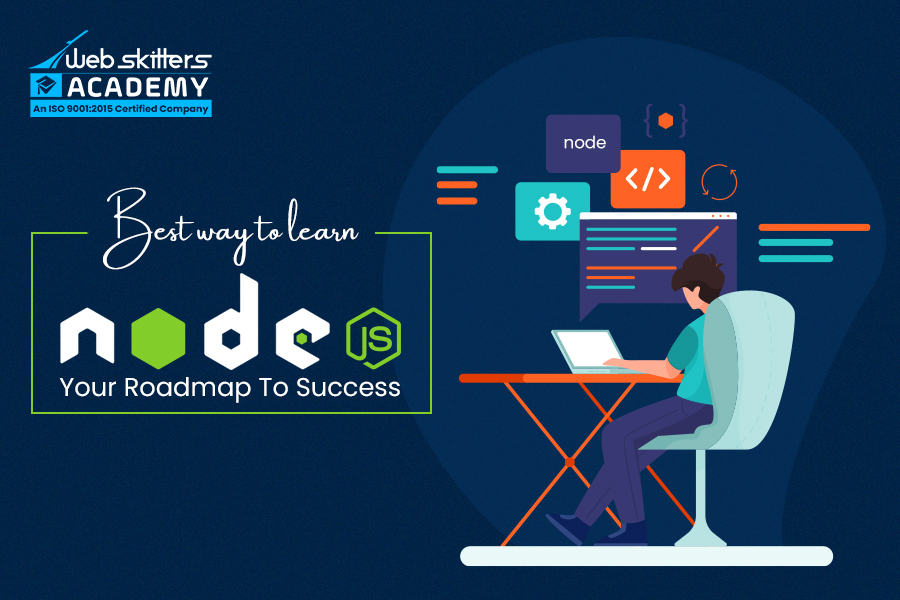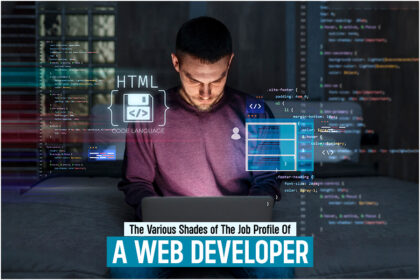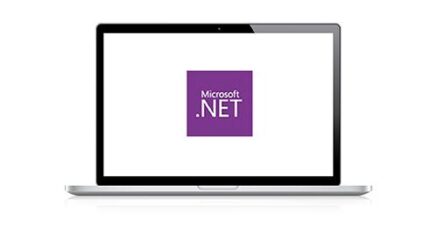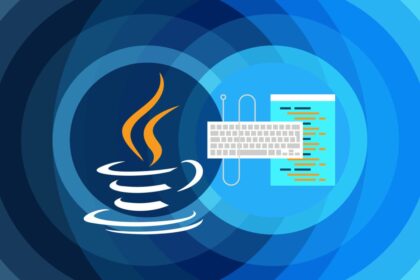
Node.js has become one of the most popular and widely-used platforms for building server-side applications and web services. According to a survey in 2012, it is one of the most well-liked frameworks among developers. Known for its scalability, efficiency, and flexibility, it allows developers to write JavaScript code both on the client and server sides, making it a powerful tool for full-stack development.
Learning Node.js can open up numerous opportunities for developers, whether you are a beginner looking to kickstart your programming journey or an experienced developer seeking to expand your skill set. However, like any programming language or platform, mastering Node.js requires a structured learning approach and dedication to practice.
In this blog, we provide you with information on the best way to learn Node.js. We will guide you through the essential concepts, tools, and resources to help you build a strong foundation in Node.js development.
So embark on this learning journey and unlock the potential of Node.js together. This roadmap will provide the guidance you need to achieve your goals. Let’s get started!
What is Node.js?
Node.js, an open-source, cross-platform runtime environment, executes JavaScript code outside of a web browser. It enables developers to use JavaScript for creating command-line tools and server-side scripting. Traditionally, server-side scripts were written in different languages, but Node.js brings them together under the umbrella of JavaScript.
This “JavaScript everywhere” approach unifies web application development by using a single programming language for server-side and client-side scripts. With Node.js, developers can build efficient and scalable applications that generate dynamic web page content before transmitting it to the user’s web browser.
Why Should You Learn Node.js?
We have often observed that many students make a common mistake. They learn a framework or language just to learn, devoid of any goals. You must remember that learning a new language or technology is different, and applying it to the real world is entirely different. As a programmer, your aim should be to make new things rather than just learn them. Therefore, see what you are getting into and find out where your interest is.
Before starting the journey, ask these questions to yourself to get some clarity-
- What purpose will this course serve? Is it to make a streaming app, apps on microservice, IoT solutions, Single Page Applications or something else?
- Is it to start a web application, your own business, or to change your career?
- Will it be used for chat apps or gaming applications?
There are many reasons to learn Node.js course, but some of them are-
-
Easy Learning Curve
Node.js has an easy learning curve due to its use of JavaScript as its scripting language. JavaScript is a widely-used language employed by various technologies such as React and Angular. The versatility of JavaScript allows it to be utilized for both front-end and back-end development, enabling seamless synchronization between the server and client sides. With Node.js, developers can achieve enhanced productivity, and the ability to reuse code contributes to a highly satisfying development experience.
-
Single Codebase and Building Microservices
Data delivery in Node, between two sides, is quite easy due to the use of the same language at both ends. This is the reason there is more consistency, less time taken, and lesser code requirement. Other than that, Node.js is also great at building microservices. Microservices have emerged as a favoured architectural style, offering agility and conventionality in rapid development. The Node.js library is well-suited for crafting microservices, boasting essential capabilities for application development and architectural handling. To establish a strong market presence, embracing this language and fostering a progressive mindset are vital steps to take.
-
Great Corporate Support
Node.js benefits from excellent corporate support as it was established by renowned organizations such as Microsoft and SAP. The formation of the Node.js Foundation, an autonomous community, was driven by the shared objective of accelerating the advancement of Node.js tools and promoting its widespread adoption. The foundation has played a crucial role in fostering rapid development and facilitating the seamless integration of Node.js into various industries. The remarkable growth of Node.js utilization in production environments has attracted numerous prominent and prosperous companies to embrace its potential.
-
Real-Time Applications
Node.js excels in handling real-time applications that require flawless interaction. It is particularly well-suited for applications involving chat functionality, gaming, live tracking and real-time social media updates. Node.js facilitates efficient synchronization, enabling swift and structured data exchange. The event-driven architecture of Node.js powers the seamless communication between the server and client sides, resulting in enhanced performance and responsiveness.
Node.js is widely adopted by companies for developing large, scalable single-page applications, video streaming platforms, and web applications due to its ability to ensure consistent and efficient utilization. Its versatility makes it a preferred choice for building such applications, offering robustness and seamless performance.
Learning Node.js- What Are The Prerequisites?
Before diving into learning Node.js, there are a few prerequisites to going for Node. Js developer course, that can help you grasp the concepts more effectively. While not mandatory, having a solid understanding of the following technologies and concepts will set a strong foundation for learning Node.js-
-
JavaScript
Since Node.js is built on JavaScript, having a good understanding of JavaScript fundamentals is crucial. Familiarize yourself with concepts like variables, data types, loops, functions, objects, and arrays. Understanding asynchronous programming and callback functions will also be beneficial. You could also be aware of Angular and Vue.js.
-
Web Development
Basic knowledge of web development concepts such as HTML, CSS, and the DOM (Document Object Model) will help you understand how Node.js interacts with the web.
-
Asynchronous Programming
One must have an in-depth knowledge of asynchronous programming and its applications.
-
Command Line Interface (CLI)
Familiarity with working in a command-line environment is essential. Understand how to navigate directories, run commands, and manage files using the command line. This will come in handy when working with Node.js and its command-line tools.
-
HTTP and REST
Understanding the basics of HTTP (Hypertext Transfer Protocol) and REST (Representational State Transfer) will help you build server-side applications and APIs with Node.js.
-
JSON
Know about JSON (JavaScript Object Notation) as it is a common data format used in web development and is often used to exchange data between the server and client.
- Know how to use server-side preprocessors such as Stylus.
- Have experience in unit testing and error management experience.
- Knowledge of SVN, Git, and CVS.
While not a requirement, you need to gain familiarity with the following technologies and concepts with these to have more benefits-
-
Express.js
Express.js is a popular web application framework for Node.js. Learning Express.js will enhance your ability to build robust and scalable web applications.
-
Databases
Knowing databases, particularly NoSQL databases like MongoDB, can be useful as Node.js integrates well with different database systems.
Remember that learning Node.js is a continuous process, and you can start with the basics even if you don’t have a deep understanding of all the prerequisites. As you progress, you can deepen your knowledge and explore more advanced topics and frameworks related to Node.js.
The Roadmap To Learning Node.js
If you are keen to learn Node.js, you should know how to use JavaScript. Having a good command of it is necessary otherwise you shouldn’t think of learning it. There will be lots of concepts that would come to use in the future. While there are several ways to learn Node.js courses online, like online resource books, youtube channels, etc., you will have to have practical knowledge as well. Just bookish knowledge will not do. So first code and build an application of your own to get a hang of it.
The resources to learn node.js are plenty. As a beginner, you may get overwhelmed with the mammoth-sized concepts, but we are here to help you.
Now, let’s see how you can learn the Node.js developer course-
-
Brief History
Ryan Dahl initially released Node.js in 2009. Within 10 years, it created a huge impact on web application development. Before Node.js, the market was dominated by JavaScript. So how did Node.js flourish?
JavaScript was great for client-side scripting but failed phenomenally when creating dynamic pages using server-side JavaScript. This is the place where Node.js became a hero. It flaunted its features helping to program JavaScript on the server.
– While in 2009, Node.js arrived, in 2010, Socket.io and Express were introduced.
– In 2011, we saw the release of NPM’s version 1.0. renowned companies like Uber, LinkedIn, etc., begin to implement Node.js.
– 2016 saw the introduction of Yarn with Node.js 6.
– In 2017, NPM worked to enhance the module’s security. Node.js 8.0.0 got released, and there was a launch of HTTP/2. It was also the year when Node.js got introduced in the V8 testing suite. This officially made Node.js the focus for JS engines other than Chrome.
– The year 2018 saw the launch of Node.js 10.0.0.
– Currently, the latest version of Node.js is Node.js 19.
-
Node.js Architecture
When embarking on the journey to learn Node.js, understanding its architecture is of utmost importance. Node.js follows a single-threaded event loop model, which sets it apart from traditional server-side frameworks. By understanding the single-threaded event loop model and the event-driven nature of Node.js, you can take full advantage of its capabilities. It allows one to write efficient code, handle concurrent operations effectively, and build highly responsive applications.
-
Node.js Installation
If you want to install the Node.js applications, there is the availability of various server options. Popular choices include hosting providers, cloud platforms like AWS and Heroku, and even self-hosted solutions. The deployment server for Node.js applications can be configured to ensure smooth and secure operation, taking advantage of load balancing and other performance optimization techniques.
The installation process is straightforward if you want to get the best way to learn Node.js from scratch. Simply visit the official Node.js website and download the stable version of Node.js that is suitable for your operating system. Before installing, ensure that you have enough disk space available and that your computer has a minimum of 4GB RAM. By following the simple steps available there, you’ll have Node.js up and running on your machine, ready for further exploration and learning.
-
NPM (Node Package Manager)
NPM (Node Package Manager) is a crucial core concept to familiarize yourself with the Node.js world. Once you have completed the installation, understanding NPM becomes paramount. NPM boasts an extensive collection of over 800,000 libraries serving various purposes. These prebuilt libraries encompass their own sets of code, enabling the creation of diverse features within Node.js applications.
By leveraging NPM, you can effortlessly incorporate the required libraries into your projects, eliminating the need to develop everything from scratch. This abundance of libraries significantly expedites the application development process empowering developers to learn and build robust applications efficiently.
-
JSON File
The JSON file plays a pivotal role in Node.js applications, serving as the project’s cornerstone. It takes the form of a manifest file, commonly named package.json, and resides within your application’s structure. This essential file holds vital metadata that manages packages, dependencies, and project scripts. By examining the JSON file, you gain insights into the packages and dependencies employed within the application. It provides a convenient and centralized repository of information for developers to reference and ensure smooth management of their Node.js projects.
-
Node.js- The Start
The initial stage of your Node.js journey involves delving into Node.js scripting. To kickstart this process, it is essential to acquaint yourself with fundamental JavaScript concepts such as variables, data types, operators, and functions. Understanding the basics of Node.js is crucial to comprehend its applications and why it stands out among other frameworks.
Node.js is a prevailing runtime environment that finds widespread use in server-side application development. It offers a range of features and benefits that make it a preferred choice for companies worldwide. While it offers numerous advantages through a good Node.js course online, it also has some limitations. Due to its single-threaded event loop, CPU-intensive tasks can cause performance bottlenecks. However, this can be mitigated by leveraging child processes or integrating with other technologies when necessary.
Since Node.js is built on JavaScript, this familiarity forms the bedrock for working effectively with Node.js. If you are new to JavaScript, it is imperative to gain a comprehensive understanding of its principles before delving into the world of Node.js. This solid foundation in JavaScript will equip you with the necessary knowledge and skills to confidently venture into the realm of Node.js development.
-
File System
After grasping the fundamental concepts, it’s time to delve into the world of file system operations in Node.js. This step introduces you to reading and writing data to files, moving beyond the console. Node.js provides the fs module, which grants access to the physical file system within a directory. By utilizing this module, you can perform several file-related operations, such as creating, reading, updating, and deleting files. Understanding the file system in Node.js equips you to interact with files and leverage their data in your applications, opening up opportunities for data persistence, configuration management, and more.
-
Events and HTTP Modules
The right way to learn Node.js is by understanding its proper application. Node.js is renowned for its prowess in building event-driven applications, and to harness this capability, it provides an events module that enables the creation and handling of custom events. Embracing a single-threaded and event-driven architecture, Node.js facilitates concurrent operations. Additionally, Node.js empowers developers with powerful HTTP modules, serving as the fundamental building blocks for server-side networking applications. These HTTP modules are extensively utilized to construct REST APIs with Node.js, further bolstering its versatility and efficiency in web development.
-
Frameworks
Coming to the frameworks, Node.js, like other server-side languages, offers a variety of frameworks that enhance application development with advanced features. Writing code from scratch to implement various functionalities can be time-consuming, which is where frameworks come into play. You can streamline your work and expedite feature development by incorporating a framework into your Node.js application. The most popular Node.js frameworks are Express.js, AdonisJs, Meteor.js, NestJs, KoaJS, Sails, and LoopbackJS. These frameworks empower developers to build applications more efficiently, providing a solid foundation and a wealth of built-in tools and libraries. Gain the right way to learn the Node.js framework to benefit humongous.
-
Databases
Storing information on your application can be a big headache if you don’t have a proper system. Of course like every other application, you need to store the data in the database. Depending on the type of application or requirement, you can choose any database and configure it with NodeJS. Some of the best-fit databases for NodeJS are given below-
Cloud databases– CosmoDB, DynamoDB
Relational- SQL Server, PostgreSQL, MariaDB, MySQL
Search Engines-ElasticSearch, Solr, Sphinx
NoSQL-MongoDB, Redis, Cassandra, CouchDB
-
Node Docker
Do you wish to create an application that is free of any environment dependencies? You will need to learn how to use Docker for Node.js. It is a powerful containerization platform that streamlines the packaging of applications and their dependencies into self-contained units known as Docker containers. By encapsulating all necessary components, Docker enables the seamless and consistent application of execution, unaffected by environmental variations. In essence, Docker is a valuable tool simplifying the process of creation, deployment, and operation of container-based applications with utmost efficiency. Weigh its pros and cons if you are still hesitant.
-
Testing
When making anything new, it has to be tested first, before launching it to the world. The same goes for Node.js too. If you looking forward to learning the Node.js course online, you need to know about the testing framework and libraries. It is part of creating any application.
Here are some testing libraries and frameworks for Node.js applications-
Unit, Behavior, and Integration Testing-Jasmine, Jest, Enzyme, Chai, Mocha
E2E Testing– Selenium, Puppeteer
-
Practice, Make Projects, and Stay Updated
Learning is a constant part of our lives. No knowledge is enough in this world. Even if you finish the best Node.js online course, you still need to reinforce your learning. No matter how long it takes to learn node.js, you need to keep working on hands-on projects and create applications using it and its frameworks. You can also join forums, communities and groups to stay in touch with the latest updates. Joining communities will let you know about the latest features, trends, and best practices. Find time to see videos on it, read blogs, and go to conferences and meetings for new updates and further learning.
Become A Successful Node.js Expert!
Now that you know the best way to learn node.js, are you searching for an institute? Well, you should because you will need a proper educational body to get concrete experience. Here’s a chance to get acquainted with the best place to learn Node.js, i.e., Webskitters Academy’s best Node.js course.
Find both online and offline classes to learn node.js with ease. You will not get a better learning environment than this one as the course is industry-oriented and the teachers are knowledgable, friendly and helpful. What’s more? You get practical training along with a 100% job guarantee. Enrol in the Node.js course now!
FAQ
How long does it take to learn Node JS if you know JavaScript?
If you have a good programming background and know JavaScript well, you don’t have to worry about how long it will take to learn Node.js. It will take just a few days. But if you have a strong experience in development but lack knowledge in JavaScript, then it may take two to six weeks to learn node.js.
Is Node.js easy to learn?
Yes, the most well-liked programming language is quite simple to learn. It is a powerful tool in today’s times, and if you have the right resources and practical application, it will be even easier for you.
Is the demand for node.js high or low?
Node.js is mostly used to build real-time data-intensive IoT devices and applications. It is one of the most sought-after programming languages, according to a market study in 2022.
What to learn after Node.js?
Once you learn Node.js, you can learn more frameworks, learn system designs, MongoDB, React.js, and Express. js and server-side programming languages, for instance, Django and Python, or project management skills.
Search
I Want to Learn...
Category
Explore OurAll CoursesTransform Your Dreams
into Reality
Subscribe to Our Newsletter
"*" indicates required fields
 Course Fees Revising Soon! to Lock in the Current Price
Course Fees Revising Soon! to Lock in the Current Price 





